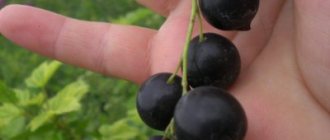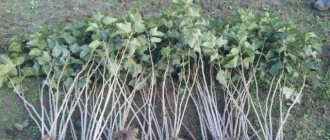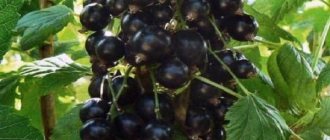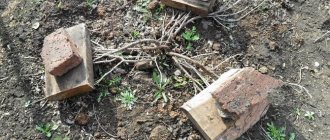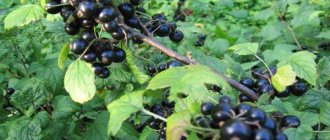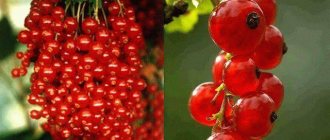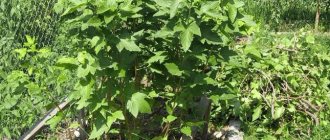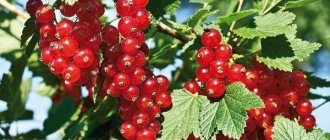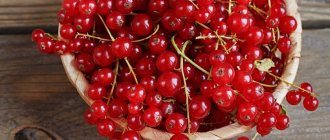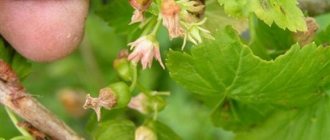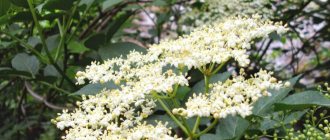Currants are a very popular berry among gardeners. It is distinguished by varietal diversity, as well as an abundance of different shapes and tastes. There are more sour varieties with thin skin, and there are sweeter dessert berries with fleshy pulp and thick skin. Black currants in Russia are found in almost every area. This is an unpretentious plant that produces a rich and very valuable harvest, because black currant fruits contain large amounts of vitamin C and other important microelements.
Black currant Litvinovskaya is one of the developments of domestic selection. Included in the State Register in 2008. The tests were carried out at the All-Russian Lupine Research Institute by a team of breeders: A.I. Astakhov, N.V. Markelova, L.I. Zueva. Scientists have crossed different varieties and forms to create a hybrid that tolerates harsh climate conditions and produces sweet berries. Thus, from the combination of the Selechenskaya variety and the CH 6-28-105 form, Litvinovskaya currant appeared.
Description of the blackcurrant variety Litvinovskaya
Currant Litvinovskaya was created by a whole team of authors, represented by A. I. Astakhov, N. V. Markelova, L. I. Zueva. The work was carried out at the Lupin Research Institute. Testing of the variety began in 2008. In 2021 it was included in the State Register and recommended for the Central region. The novelty was obtained by crossing the early large-fruited currant Selechenskaya 2 and the form CH 6-28-105. In practice, the hybrid is also grown in the Black Earth, Northwestern regions, Siberia, and the Urals.
Black currant Litvinovskaya produces powerful, straight and vigorous bushes. They are not too spreading, since the branches of this variety are straight. The height of plants can reach 1.5-2 m. The thickness of the shoots is average, the color is green, there is no pubescence. The buds are deviated from them and have an oval-pointed shape.
The root system of this variety is highly branched. It goes 0.4 m deep.
The leaves of black currant Litvinovskaya are three-lobed, leathery and wrinkled. Their color is dark green, the edges are shallowly jagged. The blades are moderately pointed, the petioles at the base are colored. The structure of the veins is clearly defined. The color of the leaves near the cuttings is brighter.
Black currant Litvinovskaya begins to bloom in the second ten days of May. The plant's brushes are medium-sized with slightly curved axes without pubescence; 6-11 buds are formed on each. The color of the flowers is pale purple or lilac.
Black currant Litvinovskaya is a large-fruited variety. Characteristics of its berries:
- size is large;
- round shape;
- black color;
- shiny thick skin;
- dry tear;
- taste sweet;
- pronounced aroma;
- the stalk is thin, medium length, green in color.
The composition of Litvinovskaya black currant berries is 7% sugars, the acidity is about 2.5%. 100 g of fruit contains 82 mg of ascorbic acid.
The weight of large Litvinovskaya currant berries is 3-4.5 g
Tamerlane
The variety belongs to the average ripening period. It forms into a tall bush that grows quickly but moderately. The berries have a round shape and weigh up to 1.5 grams, and taste sweet, but with a characteristic sourness. From one bush you can collect from 3.5-4 kg of berries.
Pros:
- Dessert taste;
- High yield;
- Easy to transport;
- Disease resistance;
- Dry picking of berries.
Minuses:
- Doesn't like heat very much;
- The older the bush, the greater the likelihood of being damaged by bud mites.
Characteristics
The goal of breeding Litvinovskaya black currant was to obtain a hybrid with sweet fruits and good resistance to unfavorable climatic conditions. The breeders completed their tasks.
Drought resistance, frost resistance
Black currant Litvinovskaya tolerates cold winters and spring frosts well. The root system of bushes is not afraid of temperatures down to – 17 °C. The buds are not afraid of cold temperatures down to -4-5 °C, even after blooming. The ovaries can withstand frosts down to -3 °C.
Litvinovskaya currant does not tolerate drought well. This variety does not like extreme heat.
Productivity
The ovaries of the Litvinovskaya blackcurrant form quickly. The ripening of the berries takes approximately 1.5 months. The harvest can be harvested at the end of June or the beginning of the next month.
The bush can produce an average of 1.5 kg of berries. Maximum yield 2.3-2.5 kg.
Currant Litvinovskaya actively bears fruit for 12-15 years. Maximum productivity is observed in the sixth year of life.
This variety is not prone to shedding if you follow all the rules for caring for the crop. The reason for dropping fruits may lie in the age of the bush, so it is important to regularly prune and thin it for rejuvenation.
Attention! Black currants may fall off due to disease or moisture deficiency. This problem often occurs when planting in the shade.
Currant berries of the Litvinovskaya variety can bake in the sun if the heat is intense and the bushes do not have enough moisture. The fruits are not prone to crushing as they ripen. This problem can arise if the planting site is chosen incorrectly or due to poor care.
Application area
Black berries of Litvinovskaya currant are universal. They are delicious fresh and suitable for freezing and preserving for the winter - making compotes, juices, jams, preserves. The leaves of this variety are used in folk medicine, for pickling, and added to tea for flavor.
Thanks to the thick skin, the Litvinovskaya currant fruits tolerate transportation well. The harvest is suitable for storage.
Harvest and storage
The harvest is harvested as the berries ripen. Usually the harvest is carried out in one day, because the berries ripen almost simultaneously
It is important not to delay in collecting them, since ripe currants easily fall off, and when overripe they lose density and taste.
Did you know? By placing currant leaves in a jar of pickles, you can not only give them a beautiful appearance, but also saturate the contents with vitamin C, and also extend the shelf life of the product.
How to harvest correctly:
- It is better to pick berries in the morning, when the dew has disappeared, or in the afternoon, when it is no longer so hot. In cloudy weather, collection time does not matter. Berries picked in sunny, hot weather or during rain spoil faster.
- The use of gloves is mandatory.
- For transportation and storage, it is better to use baskets or wooden boxes. Under no circumstances can these be packages.
- Sorting should be carried out immediately during harvesting, since ripe fruits do not tolerate overspill.
- Damaged berries remain fresh for only a day, so you need to handle them carefully.
If the crop is to be transported over a long distance, then the berries should be collected unripe and together with the clusters.
Immediately after harvesting, they should be taken to a cool and shaded place. It is better to consume or process fresh berries as soon as possible. This way they will retain their beneficial properties. Fresh currants are stored in natural conditions (+10...+12°C) for quite a long time - up to two weeks. This is possible provided it is stored in a cool, shaded and ventilated area. The shelf life can be extended in the refrigerator. At a temperature of 0°C, the shelf life of fresh currants is one month. At lower temperatures - up to three months. Completely freezing the berries allows them to be stored for several years.
It will be useful for you to read about ways to make currant jam.
Now you know how to properly grow black currant variety Dar Smolyaninova. If you follow simple planting and care rules, the plants will delight you with a good and tasty harvest.
Advantages and disadvantages
A description of the Litvinovskaya blackcurrant variety with photos and reviews explains its popularity among gardeners. Sweet berries will appeal to both adults and children.
The large size of the Litvinovskaya currant fruit facilitates harvesting and further processing
pros
- large fruits;
- sweet taste;
- winter hardiness;
- good yield;
- high marketability;
- possibility of storage and transportation;
- no pollinators required;
- resistance to fungal diseases.
Minuses
- poor tolerance to heat, drought;
- instability to kidney mite.
Dobrynya
The variety is classified as mid-season. It will require high knowledge in agricultural technology. The bush grows to a medium size and forms a compact crown. The bush will require special supports for the branches so that they do not spread along the ground. The berries are oval in shape and weigh up to 6 grams, and taste like dessert.
Pros:
- Dessert taste;
- Large berries;
- High level of winter hardiness;
- Resistance to powdery mildew.
Minuses:
- Affected by kidney mites;
- High requirements for soil fertility.
Reproduction methods
Litvinovskaya currant can be propagated in different ways:
- seeds - used by breeders to develop new varieties;
- dividing the bush;
- cuttings;
- breeding by layering.
The easiest and fastest way to propagate is to divide the bush. The most popular and effective option is propagation using lignified cuttings. If they are green, then the process is too expensive. For maximum survival rate, it is better to propagate the crop by layering.
Landing
In the northern regions, it is recommended to plant Litvinovskaya blackcurrant only in spring. In the south, this can be done in the fall. It is important to plant in spring before the buds open so that the bushes take root.
Comment! If the region has harsh winters, then autumn planting is a risk. Bushes that do not have time to take root before the cold weather die.
Seedlings must be purchased from trusted places. It is important to inspect the roots and shoots for the absence of wounds, stains, and rot. To prevent bud mites, it is recommended to keep planting material for 24 hours in a solution of 10 liters of water, 40 g of colloidal sulfur and 10 g of the drug Agrovertin.
The place for Litvinovskaya currants should be light. It is better to choose areas with tall trees with an airy crown. Their openwork shade will prevent the soil from drying out. Protection from winds and drafts is important for the culture. Loamy or sandy loam soil with a light mechanical composition is preferred.
To plant Litvinovskaya blackcurrant seedlings, you need to prepare holes 0.5 m deep and 0.6 m wide. Leave 1.5-2 m between bushes. Planting algorithm:
- Pour 10 liters of humus, 0.1 kg of superphosphate, 50 g of potassium into the recess.
- Pour 10 cm of soil.
- Pour in 5 liters of warm, settled water.
- After absorbing the liquid, place the seedling in the center with a slight slope.
- Spread out the roots.
- Fill the hole with soil, deepening the root collar by 5-6 cm.
- Compact the soil and water.
After planting, the first pruning is carried out immediately. It is necessary to shorten all shoots to 5-6 buds.
Immediately after planting currants, it is recommended to mulch the tree trunk with peat to better retain moisture
Aftercare
Litvinovskaya currant needs comprehensive care:
- Water, moistening the soil 0.2-0.3 m deep. Spend approximately 10 liters per bush. During drought, watering is needed weekly. Moisturizing is especially important during flowering, ovary formation, and fruit filling.
- Weed and loosen the soil regularly.
- From the third year of life, feed currants four times a season. In the spring, after the snow melts, you need 50 g of urea per bush, from 4-5 years of age half as much and in two doses. When forming berries - potassium-phosphorus fertilizing, in the fall compost or rotted compost, 5 kg per plant.
- Annual trimmings. Early in spring they get rid of dry, damaged and diseased branches. In autumn, after the leaves fall, remove excess shoots and growth at the root. Leave two dozen branches and 5-7 main trunks.
- Shelter for the winter. The trunk can be insulated with horse manure, the branches can be bent to the ground and fixed.
- Organization of supports. It is enough to drive pegs around the perimeter around the bush and tie the branches with twine.
Comment! Boric acid is effective for preventing pests and increasing the sugar content of fruits. You need 3 g of fertilizer per bucket of water.
Agricultural technology
No matter how unpretentious the plant is, the rules of agricultural technology cannot be canceled. It is always useful to learn more about how to choose the ideal place to plant a bush, how to care for it and what methods to combat pests and diseases on currants
It is also extremely important to determine the number of bushes that will be planted in the selected area.
Learn in more detail the best methods, secrets and features of agricultural technology for growing currants.
Each plant must have enough light and nutrients, so if the soil does not meet the requirements, it is recommended to either choose another crop for growing, or enrich the soil with nutrients, making it more neutral.
Pests and diseases
One of the main problems of Litvinovskaya currant is the bud mite. This is a microscopic arthropod with a length of no more than 0.2 mm. The pest overwinters in the buds, laying eggs in them in the spring. To prevent ticks, it is important to follow agricultural practices. To combat it, pluck out the affected buds, destroy infected branches, use the drugs Apollo, Aktara, Nissoran, Fufanon, Envidor, Fitoverm and Alirin.
The kidney mite can produce up to five generations per year; there are thousands of individuals in one kidney
